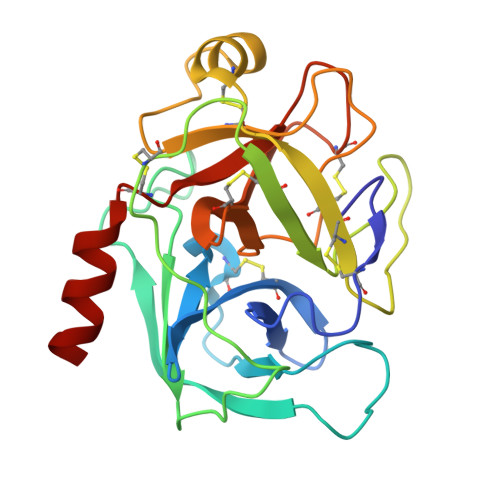The structure of a Michaelis serpin-protease complex.
Ye, S., Cech, A.L., Belmares, R., Bergstrom, R.C., Tong, Y., Corey, D.R., Kanost, M.R., Goldsmith, E.J.(2001) Nat Struct Biol 8: 979-983
- PubMed: 11685246
- DOI: https://doi.org/10.1038/nsb1101-979
- Primary Citation of Related Structures:
1K9O - PubMed Abstract:
Serine protease inhibitors (serpins) regulate the activities of circulating proteases. Serpins inhibit proteases by acylating the serine hydroxyl at their active sites. Before deacylation and complete proteolysis of the serpin can occur, massive conformational changes are triggered in the serpin while maintaining the covalent linkage between the protease and serpin. Here we report the structure of a serpin-trypsin Michaelis complex, which we visualized by using the S195A trypsin mutant to prevent covalent complex formation. This encounter complex reveals a more extensive interaction surface than that present in small inhibitor-protease complexes and is a template for modeling other serpin-protease pairs. Mutations of several serpin residues at the interface reduced the inhibitory activity of the serpin. The serine residue C-terminal to the scissile peptide bond is found in a closer than usual interaction with His 57 at the active site of trypsin.
Organizational Affiliation:
Department of Biochemistry, The University of Texas Southwestern Medical Center at Dallas, 5323 Harry Hines Boulevard, Dallas, Texas 75390, USA.















